A SERIES OF WALKS ALONG THE EMBANKMENT
THIS PAGE IS PRODUCED IN CONJUNCTION WITH
DAVE HILL
PART SIX:
VICTORIA EMBANKMENT GARDENS
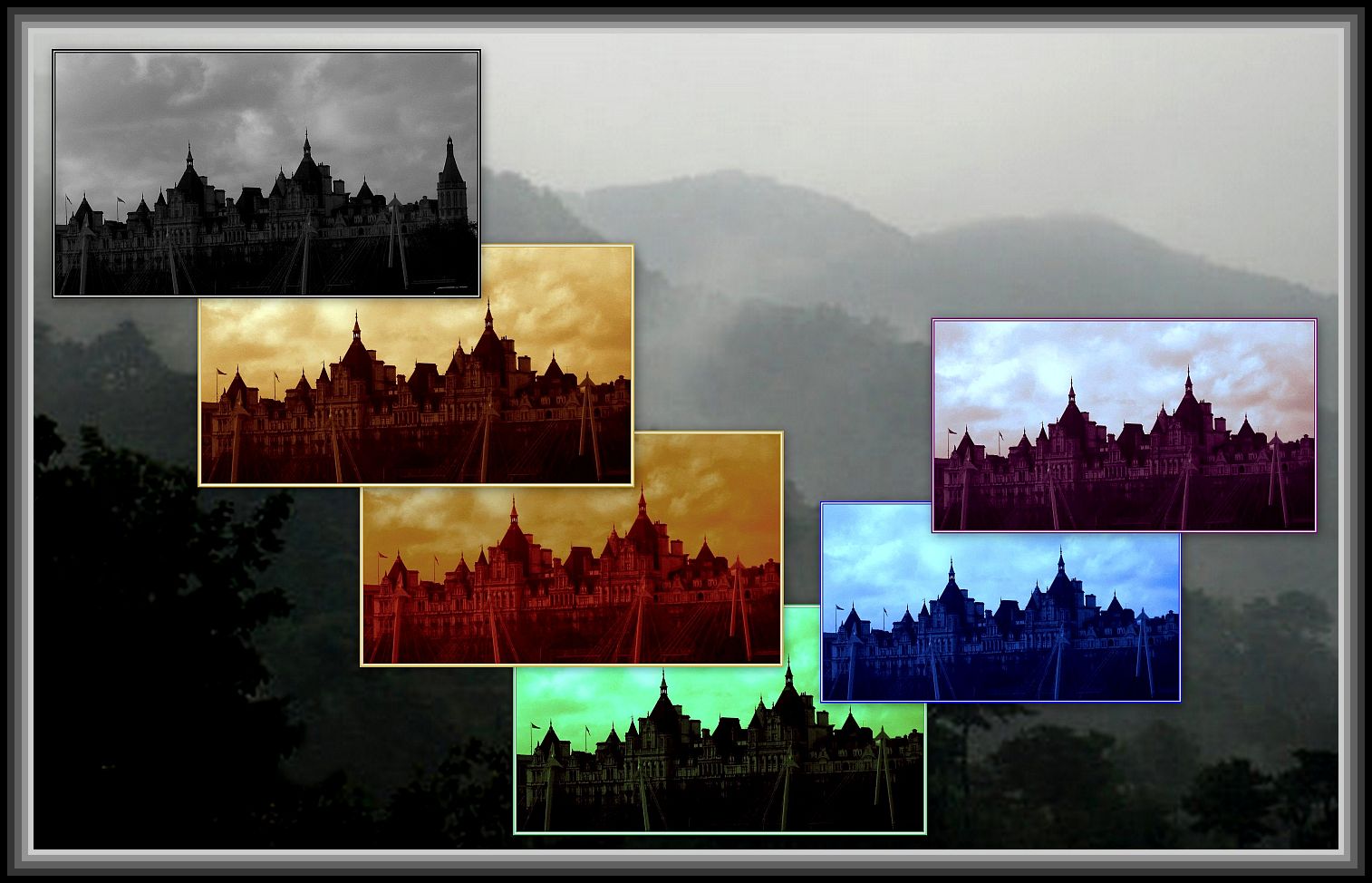 Whitehall Court – Feta Morgana*
Whitehall Court – Feta Morgana*
In Xanadu did Kubla Khan
A stately pleasure-dome decree:
Where Alph, the sacred river, ran
Through caverns measureless to man
Down to a sunless sea.
From Kubla Khan by Samuel Taylor Coleridge (1872-1834)
-oOo-
* Feta Morgana: this term is deprived from Morgan le Fay, the fairy sister of King Arthur, who is associated in mythology with magical castles.
-oOo-
WHITEHALL GARDENS,
THE MINISTRY OF DEFENCE GARDENS &
WHITEHALL COURT
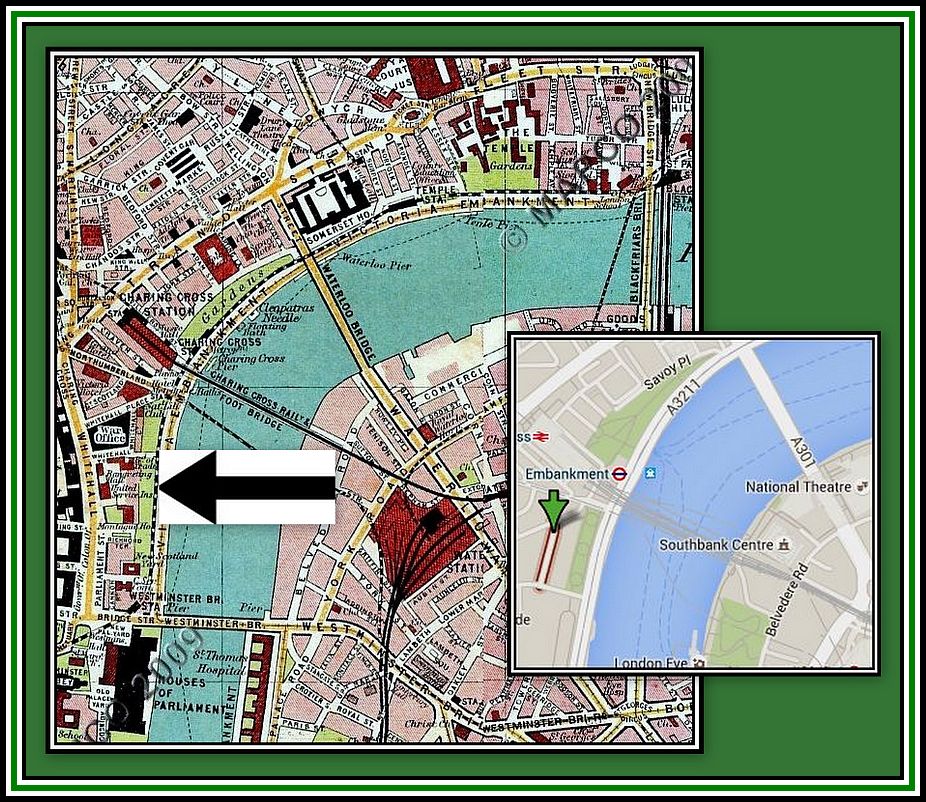 Whitehall Gardens (Black Arrow) & Whitehall Court (Green Arrow)
Whitehall Gardens (Black Arrow) & Whitehall Court (Green Arrow)
-oOo-
WHITEHALL GARDENS
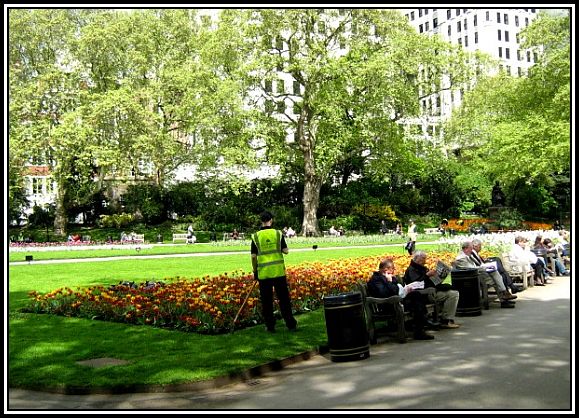 Springtime at Whitehall Gardens
Springtime at Whitehall Gardens
The next section of the Victoria Embankment Gardens is south-west of the earlier two, Temple and Main Gardens, and is separated from them by Hungerford & Golden Jubilee Bridges. Whitehall Gardens is bounded by the Bridges to the north, Whitehall Court to the west and by Horseguards Avenue to the south.
Whitehall Gardens were laid out by George John Vulliamy (1817-1886) in 1875 in a formal design with three monuments arranged down the centre.
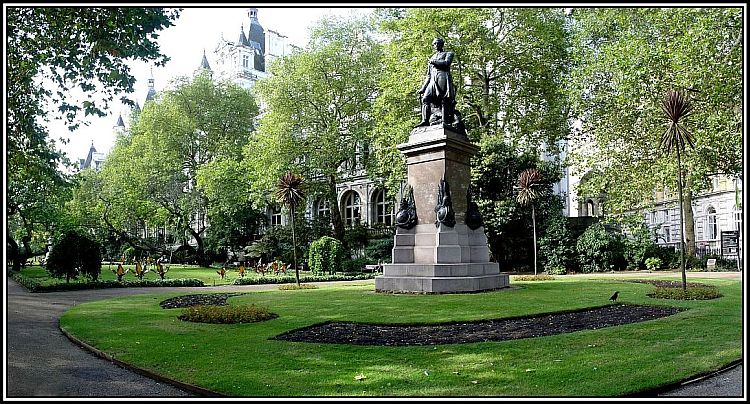 Whitehall Gardens showing the Monument to General Sir James Outram
Whitehall Gardens showing the Monument to General Sir James Outram
New railings were installed in the Gardens in 1997, which are reproductions of Sir Joseph Bazalgette’s (1819-1891) design of 1873. The Gardens have shrubbery, bedding displays and mature London Plane Trees around the peripheral path and central lawns together with some other trees including Tree of Heaven (Ailanthus altissima), Lime (Tilia tomentosa) and Indian Bean Tree (Catalpa bignonioides).
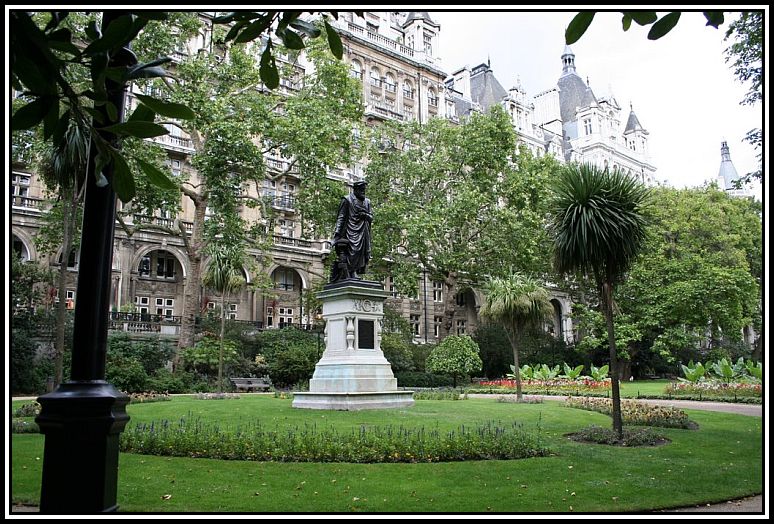 Whitehall Gardens showing the Monument to William Tyndale
Whitehall Gardens showing the Monument to William Tyndale
-oOo-
MEMORIALS
The Gardens house three Memorials to commemorate William Tyndale (c 1484-1536), Sir Henry Bartle Frere (1815-1885) and General Sir James Outram (1803-63).
-oOo-
WILLIAM TYNDALE
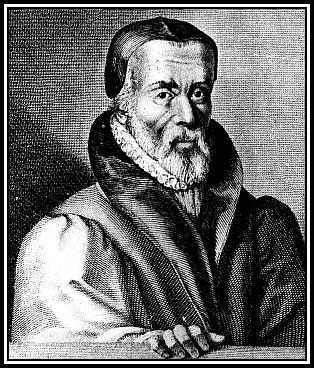 Portrait of William Tyndale from Foxe’s Book of Martyrs
Portrait of William Tyndale from Foxe’s Book of Martyrs
William Tyndale was was an English scholar and a leading figure in Protestant reform. He is also remembered for having translated The Bible into English.
-oOo-
Wycliffe’s Bible is the name now given to a group of Bible translations into Middle English that were made under the direction of John Wycliffe (1331-1384) and appeared between ~1382 and 1395. These translations played a part in the development of a movement that rejected many of the distinctive teachings of the Roman Catholic Church.
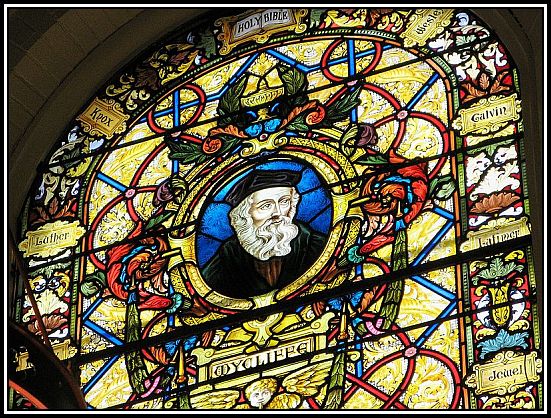 Window at Wycliffe College Toronto; photograph by Randy OHC from West Park, New York, USA (Wycliffe and the other Great Reformers) [CC BY 2.0 (http://creativecommons.org/licenses/by/2.0)], via Wikimedia Commons
Window at Wycliffe College Toronto; photograph by Randy OHC from West Park, New York, USA (Wycliffe and the other Great Reformers) [CC BY 2.0 (http://creativecommons.org/licenses/by/2.0)], via Wikimedia Commons
Prior to the appearance of these translations, people were familiar with The Bible only in the form of oral versions of the Scriptures. At this time, most people could not read, but John Wycliffe believed that people should be able to read and study the Gospel in their own tongue. He and a group of translators set about translating the Vulgate, the Latin Bible that was the standard Biblical text of Western Christianity into the English (i.e. Middle English).
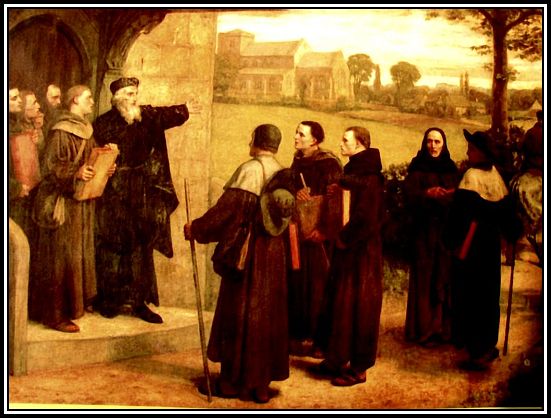 Wyclif Giving “The Poor Priests” His Translation of The Bible by William Frederick Yeames (1835-1918)
Wyclif Giving “The Poor Priests” His Translation of The Bible by William Frederick Yeames (1835-1918)
The spread of Wycliffe’s Bible resulted in a death sentence for any unlicensed possession of Scripture in English. This was in contrast to the position in Europe. Translations in all other major European languages had been made by this time and were available to those who could read.
-oOo-
Window depicting William Tyndale at Kingsdown, Bristol by Arnold Wathen Robinson (1888-1955)
William Tyndale’s translation of The Bible was the first in English to use the Hebrew and Greek texts as its source, as opposed to the Latin Bible. It was also the first English version to be produced using the Printing Press and the first of the new English Bibles of the Reformation. The production of such a Bible was seen as a direct challenge to the Hegemony (i.e. control) of both the Roman Catholic Church and to the Laws of England to uphold the church’s position. In 1530, William Tyndale also wrote The Practyse of Prelates, where he opposed Henry VIII‘s divorce from Catherine of Aragon on the grounds that it contravened Scripture.
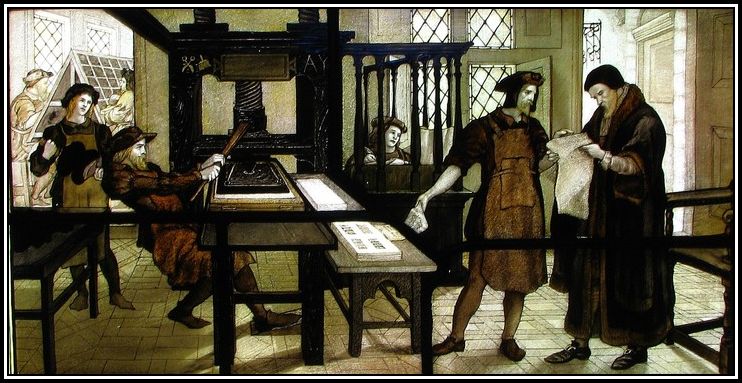 William Tyndale & Associates at work (Hereford College Oxford)
William Tyndale & Associates at work (Hereford College Oxford)
William Tyndale was arrested in 1535, jailed and held for over a year at the castle of Vilvoorde (Filford) outside Brussels. In 1536, he was tried and convicted of Heresy and sentenced to death. He was executed by strangulation and, following his death, his corpse was taken and burnt at the stake.
William Tyndale, before being strangled and burned at the stake; from Foxe’s Book of Martyrs (1563)
Following William Tyndale’s death, in 1537 Henry VIII seemingly had his eyes opened (which had been Tyndale’s last prayer) with the authorization of The Great Bible for the Church of England following the break with the Roman Catholic Church, which proved to be essentially the Tyndale Bible. Within two years, a copy of The Great Bible was present in all Anglican Churches in England.
As a result of Henry VIII eyes being opened, William Tyndale and his translation of The Bible, went on to play a key role in the spreading of Reformation ideas across the English-speaking world.
-oOo-
The William Tyndale Monument was erected by The British and Foreign Bible Society to commemorate both its 80th anniversary and the supposed 400th anniversary of his birth. It was unveiled in May 1884 and is the work of Joseph Edgar Boehm (1834-1890) with Edward William Godwin (1833-1886) as architect. It consists of a bronze statue standing on a stone plinth and shows William Tyndale dressed in academic dress and with his right hand resting on an open book that is laying on an early printing press.
There are two plaques on the plinth of the Monument: the one at the front relates episodes in the life of William Tyndale and the one at the back lists those that contributed to the cost of the statue.
-oOo-
There is a Memorial Plaque to William Tyndale in the south choir aisle of Westminster Abbey and a Memorial Tower built on a hill at North Nibley in Gloucestershire, which is believed to be where he was born.
-oOo-
SIR HENRY BARTLE FRERE
Sir Henry Bartle Edward Frere (1815-1884) was a colonial administrator in India and rose to become the Governor of Bombay.
As the High Commissioner for Southern Africa, his attempted to impose a British Confederation on the region, which led to the overthrow of the Cape’s first elected government and to a number of regional wars and the invasion of Zululand and the First Boer War. As a result, he was recalled to England to face charges of misconduct and was officially censured for acting recklessly. Before he could be vindicated, he died in May 1884 and was buried in St Paul’s Cathedral.
A Memorial to Sir Henry Bartle Edward Frere was unveiled in Whitehall Gardens in June 1888 by the Prince of Wales (later Edward VII). The sculptor was Thomas Brock (1847-1922) and shows Sir Henry in the uniform of a Privy Counsellor with the robe and collar of a Knight Grand Commander of the Star of India and the Insignia of the Order of the Bath.
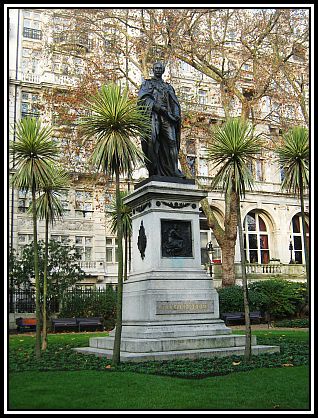 Memorial to Sir Henry Bartle Edward Frere
Memorial to Sir Henry Bartle Edward Frere
-oOo-
GENERAL SIR JAMES OUTRAM
General Sir James Outram (1803-1863) was a General who fought in the Indian Rebellion of 1857. He was given special thanks by Parliament and was made a Baronet soon afterwards. He returned to England in 1860, as a result of ill health and died in March 1863.
Sir James was buried in the nave of Westminster Abbey, where the marble slab on his grave bears the epitaph, The Bayard of India. He had first been called this by Sir Charles Napier (1782-1853) and means a knight without fear and beyond reproach, which had first been used to describe Pierre Terrail, Seigneur de Bayard (1473-1524) who was a French soldier of great note.
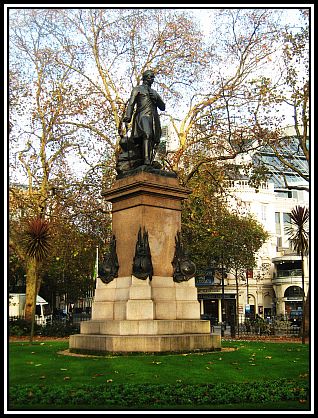 Memorial to General Sir James Outrum in London
Memorial to General Sir James Outrum in London
A Memorial to Sir James was unveiled in August 1871 by Lord Halifax ( and was placed in Whitehall Gardens. Originally it had been hoped to place a statue to Sir James in Trafalgar Square in 1861, but permission was refused. The Memorial consists of a bronze statue produced by Matthew Noble (1818-1876), which stands on a pedestal with trophies of arms at each corner, which represent the Indian Campaigns where he saw action.
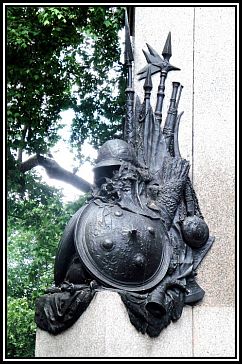 One of the Trophies of Arms at a corner of the Pedestal – Photograph by Robert Freidus
One of the Trophies of Arms at a corner of the Pedestal – Photograph by Robert Freidus
-oOo-
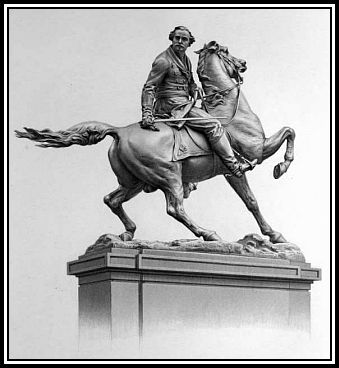 General Sir James Outram Memorial in Calcutta
General Sir James Outram Memorial in Calcutta
-oOo-
SAMUEL PLIMSOLL
Outside of the railings of Whitehall Gardens and facing the Victoria Embankment, is an interesting and unusual Memorial. The Memorial is to Samuel Plimsoll (1824-1898) who was a Social Reformer and a Liberal Member of Parliament (MP).
-oOo-
During his early life, Plimsoll was reduced to destitution and suffered the hardships experienced by the poor. Later when he was lucky enough to enjoy a reversal of fortune, he vowed to be an advocate of the poor.
He turned his attention to what were called Coffin Ships, which were un-seaworthy and overloaded vessels, often heavily insured, owned by unscrupulous businessmen who risked the lives of their crews.
Once Plimsoll entered Parliament, he introduced a Bill dealing with the subject of a Safe Load Line on ships. Sadly, he did not succeed in the passage of his Bill due to there being many MPs who were also shipowners elected to Parliament at the time and who voted against it.
The failure for the Bill to pass caused Plimsoll to lose his temper in the House of Commons. An argument broke out concluding with him stating that the Bill had been stifled whereupon he shook his fist at the Speaker of the House and referred to those against it as Villains! Later Plimsoll apologised for his behaviour.
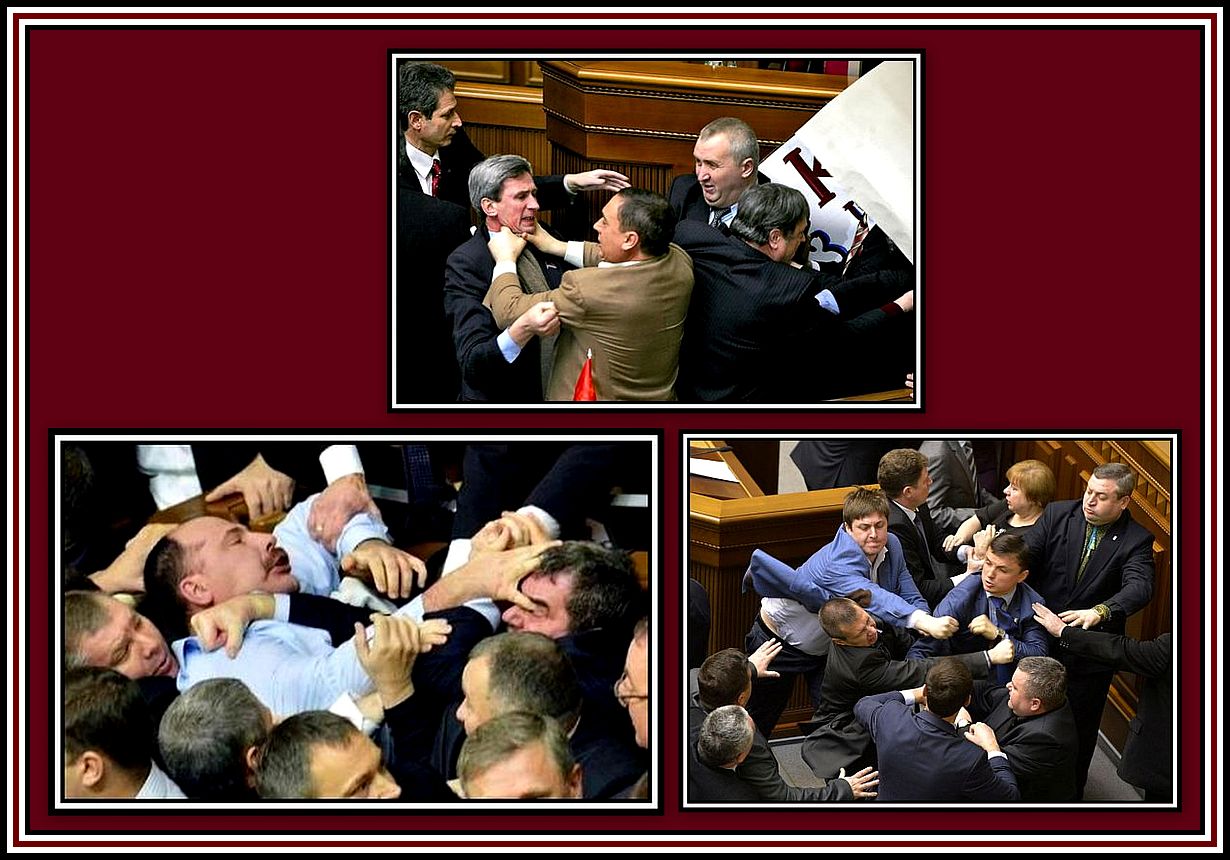 Parliamentary Debate in The Ukraine reaching its Boiling Point
Parliamentary Debate in The Ukraine reaching its Boiling Point
Since many people shared Plimsoll’s opinion that the Bill had been stifled by pressure applied by the shipowners, popular feeling forced the government to pass a Bill which in the following year, was amended into the Merchant Shipping Act (1876).
The Merchant Shipping Act gave powers of inspection of ships to the Board of Trade and a mark was placed on the hull of a ship to indicate the safe limit to which it may be loaded. This mark became known as The Plimsoll Mark or Line. Unfortunately, a number of ship owners flaunted The Act and painted the Line anywhere on the ship that they chose. It was not until 1890 that the Board of Trade strictly applied the regulations intended by Plimsoll.
Later in his career, Samuel Plimsoll became the Honorary President of the National Sailors’ and Firemen’s Union and also helped increase public awareness to the horrors of the cattle ships where animals were transported under appalling and over-crowded conditions.
He also spent time in the U.S. where he attempted to have England portrayed in a less bitter tone in the History Textbooks being used in American Schools.
Samuel Plimsoll died in Folkestone on 3rd June, 1898 and was buried in the churchyard of St. Martin’s Church, Cheriton in Kent.
-oOo-
The Memorial to Samuel Plimsoll outside Whitehall Gardens was unveiled in August 1929 and is the work of Ferdinand Victor Blundstone (1882-1951).
The plinth is flanked by bronze figures of a sailor and Justice with The Plimsoll Line being used as a motif. There are decorative railings on either side of the Memorial.
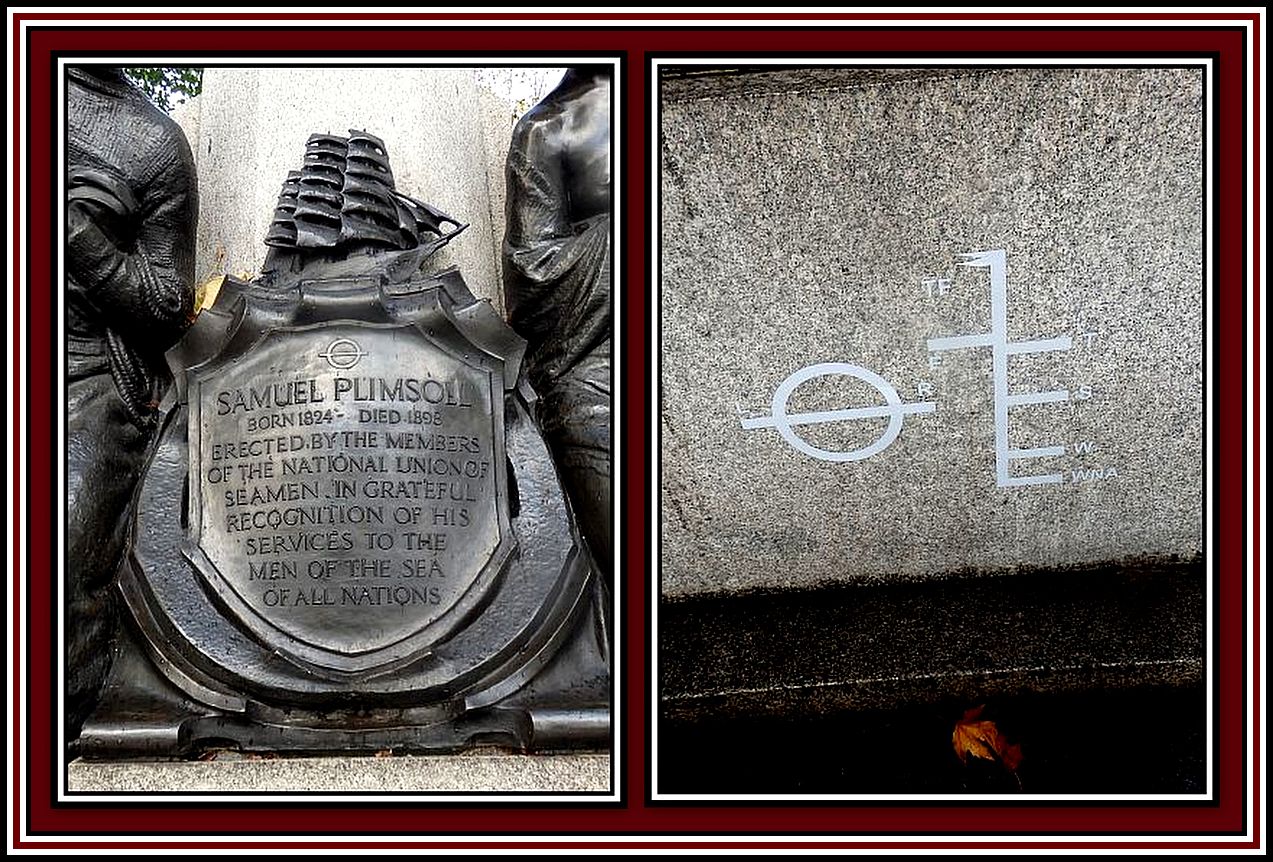 The inscription on the Memorial reads:
The inscription on the Memorial reads:
Erected by the members of the National Union of Seamen in grateful recognition of his services to the men of the sea of all nations.
-oOo-
In 2000 the Gardens received a Millennium Award for improvements to the shrubbery arrangements, which is noted by a plaque next to the entrance from Northumberland Avenue.
-oOo-
KOREAN WAR MEMORIAL
The Korean War Memorial is a gift from the Government of South Korea in recognition of the British Soldiers who took part in the conflict on the Korean Peninsula between 1950 and 1953. The Memorial was installed in Whitehall Gardens and was unveiled in December 2014 by Prince Richard, Duke of Gloucester.
The Memorial consists of a bronze statue of a British soldier standing before a Portland Stone Obelisk on a Welsh Slate base. The statue is the work of the sculptor Philip Jackson. The inscription states:
With gratitude for the sacrifices made
by the British Armed Forces
in defence of freedom and democracy
in the Republic of Korea
The UK is the last of the countries involved in this conflict to receive a Memorial. The Korean War is often referred to as The Forgotten War since it took place with little attention being given to it and to the returning soldiers.
-oOo-
——oooOOOooo——
ACKNOWLEDGEMENTS
I would like to thank Mr. Paul Bland for his help in the writing of this piece.
——oooOOOooo——
Click here to GO to PART SEVEN: VICTORIA EMBANKMENT GARDENS – CHILDHOOD MEMORIES
——oooOOOooo——
Click here to RETURN to PART FIVE: VICTORIA EMBANKMENT GARDENS – MAIN GARDENS
——oooOOOooo——
Click here to RETURN to A SERIES OF WALKS ALONG THE EMBANKMENT Home Page
——oooOOOooo——
Click here to GO to AN ADDITIONAL SET OF POSTCARDS OF OLD LONDON: THE EMBANKMENT by DAVE HILL
——oooOOOooo——
Click here to GO to ISAMBARD KINGDOM BRUNEL
——oooOOOooo——
Click here to RETURN to the TABLE OF CONTENTS
——oooOOOooo——

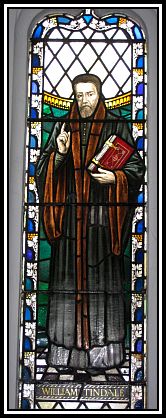
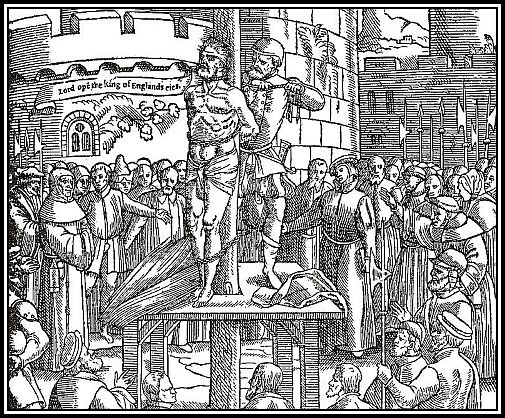
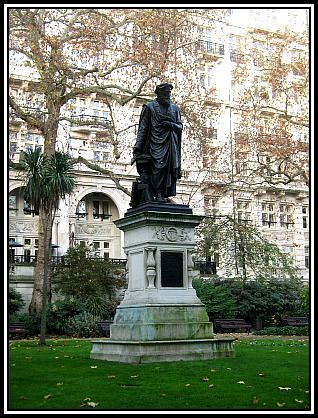
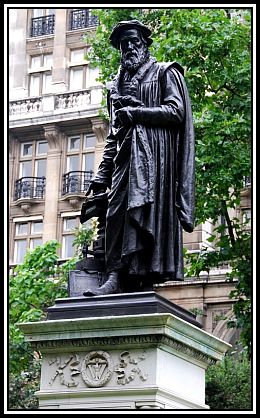
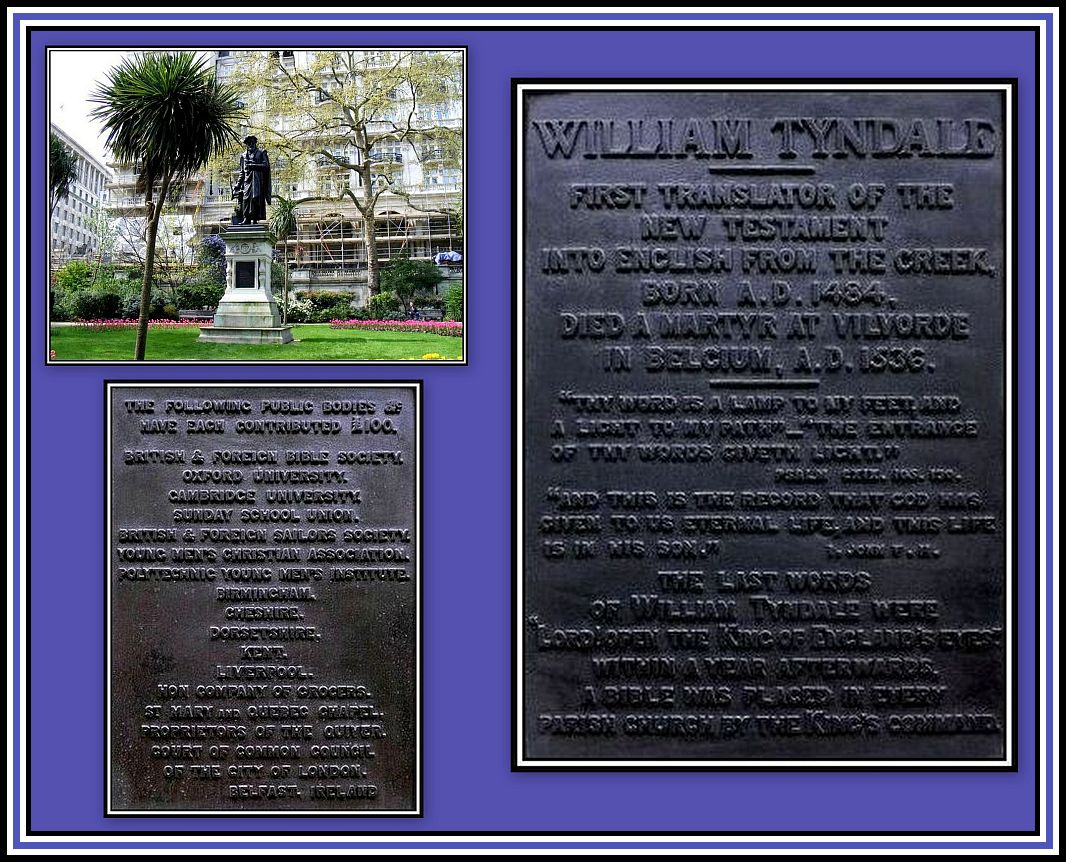
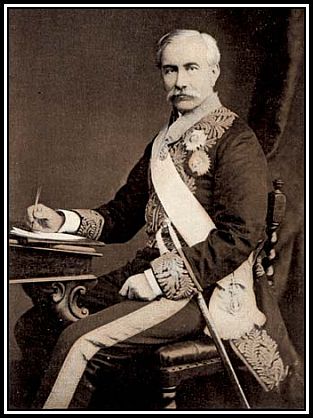
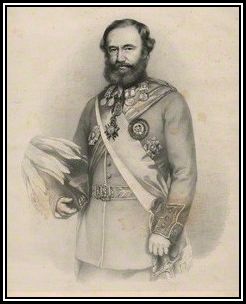
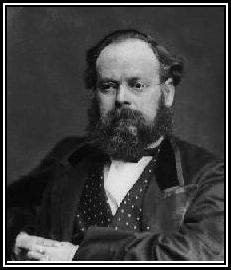

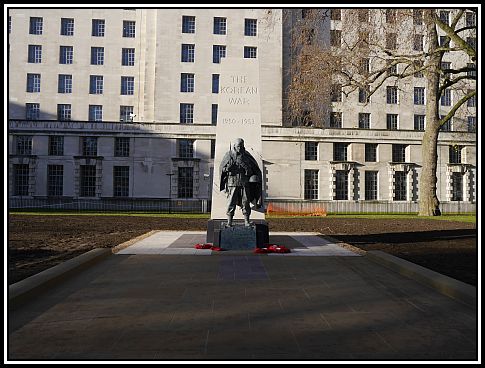
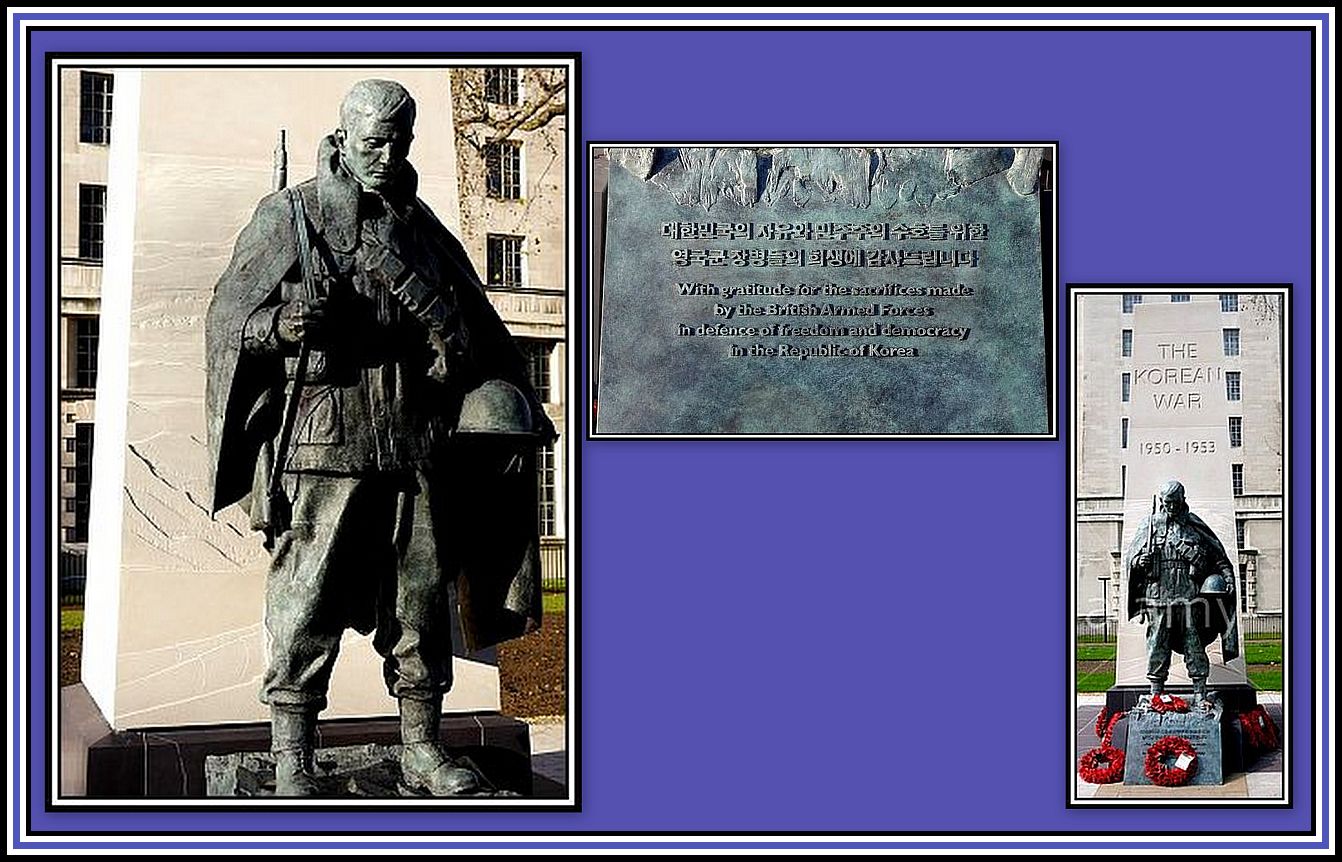
Again, a most informative site, when in London I have never had the time to explore as much as I would have liked as there was always theatre waiting, and in London where one can do 3 shows a day on some days, time was always of the essence. In the 1960s and early 1970s theatre was dark on Mondays so did get to visit Canterbury, Cambridge, a few of the royal homes etc., but have never been to Stratford, but did get to see the Embankment on many occasions to visit the National Theatre, and to walk along this magnificent stretch of the Thames. Also got to tour the Globe Theatre, but never saw a performance there.
Being born and bred in London I, like many others, tended to take my city for granted. We will make a point of visiting these gardens the next time we are in London.
Manny.
Congratulations. Your website sites are reminders of our heritage. So much detail. Brought much enjoyment.